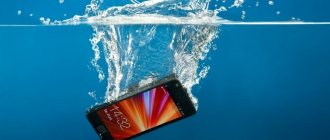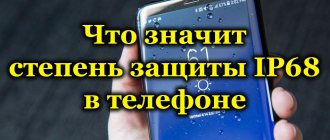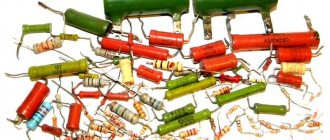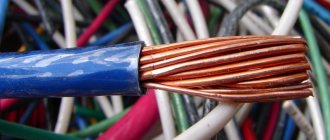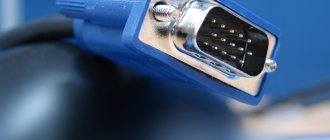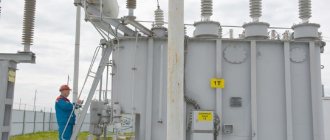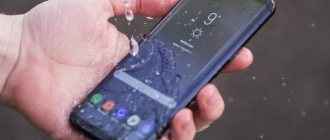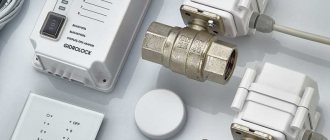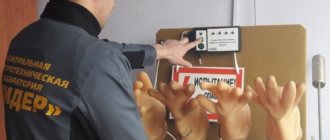Brief summary. This article is intended to answer questions about the degree of protection of equipment from dust and moisture. Many people see IP markings on electrical equipment and ask questions, what does ip 65 mean? Can products with IP44 be installed outdoors? What does ip 20 mean? what is the degree of protection ip54, what does ip 54 mean? In this article we will look in detail at ip 54, what kind of standard is used in the CIS and abroad. Let's give a detailed table of abbreviations for the degree of protection IP.
- Degree of protection ip › GOST, standard
- IP waterproof
- Degrees of IP protection › Table
- IP protection class
- IP 20
- IP 30
- IP 44
- IP 54
- IP 55
- IP 65
Degree of protection ip › GOST, standard
The degree of protection IP (Ingress Protection Rating) is a systematization of the protection values of the housing (meaning the external coating) of electrical appliances and electrical equipment under the influence of various negative conditions, such as the influence of humidity, open seepage of liquid, pollution, as well as exposure to various environments.
This numeric index defines the international IP standard. Among them is the standard of the International Electrotechnical Commission IEC 60529, in the CIS GOST 14254-96, GOST 14254 and in Germany - DIN40050-9.
The current standard IEC 60529:2013 was adopted in 2013. The current GOST 14254 - 2015 in the Russian Federation was introduced on 2022.03.01. It differs from the previous GOST 14254-96 in the moisture protection index: the new current GOST 14254 - 2015 has 10 indices from 0 to 9. The ipx9 index indicates protection from high-temperature water jets supplied under high pressure (see below). Current GOSTs for IP protection level:
- IEC 60529:2013
- GOST 14254 - 2015,
- DIN40050-9,
- DIN EN 60529 (VDE 0470).
The degree of protection is provided when selecting various industrial equipment, taking into account the external environment where it will be used. So, when it is planned to change the wiring of a house, then when selecting a distribution panel, one should take into account the negative environmental conditions. There will be some impact on appliances and equipment that are located outdoors or in a building.
For electrical products, the protection class is given in the form IP [number 1] [number 2] .
[number 1] shows the class of protection against exposure to external environmental objects.
7 levels of protection from external objects from 0 to 6 are standardized:
- “0” - no protection from external objects;
- “1” - the casing is protected from the impact of third-party objects with a diameter of 50 mm or more, from contact with the back of the hand;
- “2” - protection from the negative effects of third-party objects with a diameter of more than 12.5 mm, from touching the case with your fingers;
- “3” - there is protection from foreign objects with a diameter above 2.5 mm, conductors, small tools (hand);
- “4” - protection from foreign objects with a diameter of 1 mm or more - these are conductors fixing nuts and bolts;
- “5” - complete protection from foreign objects of any size, incomplete protection from dirt and dust (a small amount of dust is allowed to fly inside the housing without affecting the functionality of the devices inside the electrical panel);
- “6” - complete protection from various objects, complete dust resistance.
Illumination standards
| Types of premises | Illumination according to standards (lux) | |
| Russian (SNiP 23-05-95) | International (IKO) | |
| General offices using computers | 200-300 | 500 |
| Large, open-plan offices | 400 | 750 |
| Drawing offices | 500 | 1000 |
| Conference rooms | 200 | 300 |
| Stairs, escalators | 50-100 | 150 |
| Corridors, halls | 50-75 | 100 |
| Archives | 75 | 200 |
| Shops, supermarkets, car dealerships, showrooms | — | 500 |
| Storerooms | 50 | 100 |
Lighting standards for various rooms
| Name of buildings and premises | Illumination of working surfaces, lux | Cylindrical illumination, lux | |
| With combined lighting | With one general lighting | ||
| Administrative buildings, design and research organizations | |||
| – Offices and other work rooms | 400*/200** | 300 | – |
| – Design, engineering and drawing bureaus | 600*/400** | 500 | – |
| – Reading rooms | 400/200** | 300 | 100 |
| – PC rooms, display rooms | 750/300** | 400 | – |
| – Conference rooms, meeting rooms | – | 200 | 75 |
| – Laboratories | 750*/300** | 300 | – |
| Financial institutions, lending and insurance organizations | |||
| – Operating rooms, cash registers | 400*/200** | 300 | – |
| – Collection | – | 300 | – |
| Schools, secondary and higher educational institutions | |||
| – Classrooms, auditoriums, study rooms, laboratories | – | 500 (vertical in the middle of the board) | |
| – | 300 (horizontal on tables and desks) | ||
| – Offices and rooms of teachers | – | 200 | |
| – Gyms | – | 200 | |
| – Recreation | – | 150 | |
| Children's preschool institutions | |||
| – Reception rooms, dressing rooms, group rooms, playing rooms, dining rooms | – | 200 | |
| – Bedrooms | – | 75 | |
| Sanatoriums, holiday homes | |||
| – Chambers and sleeping rooms | – | 150 | |
| Spectacular buildings | |||
| – Auditoriums for events of republican significance | – | 500*** | 150 |
| – Theater auditoriums, concert halls | – | 300*** | 100 |
| – Auditoriums of clubs, theater foyers | – | 200*** | 75 |
| – Exhibition halls | – | 200*** | 75 |
| – Lobbies of cinemas, clubs | – | 150 | 50 |
| The shops | |||
| Trading halls: | |||
| – grocery stores | – | 400 | 100 |
| – clothing, linen, footwear, fabric, fur, hats, perfume, jewelry stores | – | 700 | 100 |
| – tableware, furniture, sporting goods | 500 | 75 | |
| Fitting booths | – | 300 (vertical at 1.5 m from the floor) | |
| Hotels | |||
| – Service Bureau | – | 200 | |
| – Living rooms | – | 150 | |
| – Rooms | – | 100 | |
| Auxiliary buildings and premises | |||
| – Sanitary facilities: | |||
| washrooms, latrines, smoking rooms | – | 75 | |
| showers, dressing rooms | – | 50 | |
| – Lobbies and dressing rooms for outerwear: | |||
| in schools, universities, theaters, clubs, hotels and main entrances to large industrial and public buildings; | – | 150 | |
| in other industrial, auxiliary and public buildings | – | 75 | |
| – Stairs: | |||
| main staircases of public and industrial buildings; | – | 100 | – |
| staircases of residential buildings; | – | 10 | – |
| the rest of the stairs | – | 50 | – |
| – Corridors and passages: | |||
| main | – | 75 | – |
| floor-to-floor in residential buildings | – | 20 | – |
| other corridors | – | 50 | – |
| Notes: | |||
| * horizontal illumination at a level of 0.8 m from the floor with the combined action of general and local lighting; | |||
| ** the same, but only from general lighting; | |||
| *** when using incandescent lamps, the level is standardized | |||
Illumination created by natural and artificial light sources
| Light-stars | 0.00005lux |
| Sunlight during the day | 32000-100000lux |
| Moonlight | 1lux |
| Screen light (TV studios) | 1000lux |
IP waterproof
[number 2] demonstrates the degree of protection against the negative effects of moisture (exposure to liquids, dampness). There are 10 degrees of protection of the case from moisture:
- “0”—no protection;
- “1” - the shell is protected from condensation moisture and raindrops falling strictly in a vertical position;
- “2” - the case is protected from drops, the angle of incidence is up to 15 degrees;
- “3” - there is protection against drops, the angle of incidence is up to 60 degrees;
- “4” - there is protection from liquid drops of any direction;
- “5” - protection from short-term exposure to a fluid flow (jet) of random direction;
- “6” - protection of the hull from prolonged exposure to a strong flow of liquid (water) of random direction, as well as from waves at sea;
- “7” - there is protection against moisture penetration into the inside of the equipment body during short-term immersion in liquid (water) to a depth of 1 m. In this case, there may be penetration of a small volume of liquid into the middle, which does not have an adverse effect on the performance of the products;
- “8” - there is protection against liquid flowing into the products when immersed to a given depth for a given period of time). The body of the products in this version is completely waterproof;
- “9” - there is protection against hot water jets under pressure getting into the products.
The degree of protection of the outer casing (shell) from the influence of negative external conditions is established on the basis of performing a test of the working element. Below are tables with a detailed explanation of the degrees of protection, testing methods and sequences of their implementation.
For a convenient presentation, the classification of IP protection is shown in the figure.
Figure - Classification of IP protection
Let's look at examples
IP55 protection degree means that the housing or shell of the product - it can be anything, a power cabinet, starter, machine, RCD, switch, etc. - provides complete protection against accidental contact of internal components under current with a finger, screwdriver or thin probe . In this case, slight penetration of dust inside is allowed (the housing is not sealed), which should not cause interruptions in the operation of the device. It also has reliable protection against rain. This is a “street” class of product, but it will no longer withstand being doused with water, for example, from a bucket.
The degree of protection class IP44 is a “safe” design of products designed to work indoors, but in conditions of high humidity. This class must correspond to sockets, switches and other elements located, for example, in the bathroom. In fact, they can look like sockets with lockable covers and automatic “shutters” on the contacts. They should not be protected from dust, but a short circuit from accidental ingress of moisture is excluded. Touching them with wet fingers is also safe.
Note: none, even the highest safety classes, imply that the product cannot be disassembled. This is a civilian safety standard; it cannot and should not apply to specially designed products for military and similar needs.
What can a low protection class offer? Let's get acquainted with the degree of protection class IP20. A product of this class protects its contents only from penetration of fairly large objects, about a finger in diameter. From a constructive point of view, this could be, for example, an installation box. It may have small technical holes for tools - tester contact probes, screwdrivers, and so on. It can only be placed indoors or inside another electrical cabinet with a high degree of protection, since even from above such a product is not protected from moisture.
Degrees of IP protection › Table
It is convenient when the degrees of protection of electrical equipment ip are summarized in tables. Below are three tables for IP decryption protection. They comply with GOST 14254 - 2015.
Table of degrees of IP protection from access to dangerous parts , indicated by the first digit of the index
IP protection table (first digit)
Table of the degree of protection of electrical equipment IP from water (second digit)
In addition to the first two digits, the protection degree marking may contain two letters. The one that comes first after two numbers is called additional, and there may also be a letter with auxiliary information. The additional letter indicates the level of human protection from access to dangerous parts.
When a person touches electrical equipment, the following types of protection are distinguished:
- “A” - with the back of the hand;
- “B” - fingers;
- “C” - hand tool;
- "D" - single conductors.
The first number after IP and the additional letter in the marking have different meanings. The number indicates the protection of the housing from the negative influence of a person or any objects, and the additional letter indicates the protection of a person from the negative influence of elements of the electrical equipment itself.
For example, the first number “3” indicates the protection of the housing from hand-held tools, that is, the equipment will not be damaged when exposed to hand-held tools. The additional letter “C” certifies that personnel will be protected from the influence of unfavorable factors, namely electric shock, if the shell is exposed to hand tools.
The second letter of the protection category marking after the numbers displays auxiliary information.
- "H" - high voltage equipment,
- “M” - the test was carried out while moving,
- “S” - the test was carried out in a stationary (motionless) state.
"M" and "S" are usually used for equipment with moving parts.
Samples of protection degree markings with additional and/or auxiliary letters - IP 20C, IP 67S, IP 55DS.
Additionally, instead of numbers, there are “X” symbols. This symbol means that protection from foreign objects or water is not standardized for these components of the electrical product. Marking examples – IP X5, IP 1X, IP XX.
In addition, the product may be marked with not one, but several degrees of protection. Multiple degrees of protection are noted if it is necessary to indicate protection simultaneously from several negative influences, and the latter correspond to different degrees when classifying protections. For example, the product is protected from the effects of low water flow and short-term immersion in liquid. Under such conditions, the following marking can be given - IP 65 / IP 67.
How to read labels
Deciphering the index requires certain knowledge. Here, the first digit shows the level of access to dangerous parts inside the product for factors that can damage it mechanically. These are any solid objects, from hands to thin wire, as well as dust.
The second number indicates the moisture protection that this product has.
The numbers are in ascending order. The higher the number, the higher the level of protection. If the marking is IP00, it means there is no protection at all (for example, it is a bare wire). If a product is marked as IPxx, then the degree of protection is not defined. Then it should be considered zero.
The format index, for example, IP4x means that according to the “mechanics” the protection class is defined and corresponds to four, and the moisture protection class is undefined (considered zero).
The letter after the numbers means an addition, increased security according to some parameter, and the product must correspond to its main class. Also, a letter can replace the missing first digit (a rare situation). A number of letters refer to high-voltage equipment: it determines the reliability of products operating under high voltage when in contact with water.
IP protection class
Often, when they mean “degree of protection,” they say “IP protection class.” From a technical point of view, these are the same thing, that is, synonymous terms. In the regulatory literature, the wording “IP protection classes” is usually not used, but you can often come across questions: “IP54 protection class” or “IP65 protection class”, or “IP21 protection class, what is it?” In these cases, an appropriate degree of protection is meant. In this case, no other or separate standards are provided beyond those indicated above.
Let us next consider the commonly used degrees of protection of electrical products and equipment. Let's give examples of IP decoding and determine where and in what cases the bodies of these markings are used. To be specific, let’s take the case of electrical switchboard housings.
What is IP65?
Devices marked IP65 are the most common today. The devices have maximum dust protection and are able to operate in any conditions. Since their cases are reliably sealed. And they have good insulation from moisture. Since 5 in the IP classification means resistance to moisture even under jet pressure.
With the abbreviation IP65, devices have:
- Complete resistance to dust particles of any size getting into the body;
- Marking allows the use of devices and tools in an open environment and in all weather conditions, including heavy rains;
- Such objects can be used in special conditions with high levels of moisture.
IP 20
IP 20 – there is protection from large, large objects with a diameter above 12.5 mm (indicated by “2”), there is no protection from water, since the corresponding position is “0”.
Such IP 20 equipment is suitable for installation in dry buildings, where the appearance of water (splashes) on the housing is not expected, and there is no exposure to objects with a diameter of up to 12.5 mm. In the case of a switchboard housing with IP 20, it should be installed in rooms, apartment corridors, but should not be used, for example, in a bathroom. Table - Explanation of the degree of protection IP20 (dust and moisture protection)
| Protection from external solid objects (dust protection IP20) | Water protection (IP20 waterproof) |
| 2 | 0 |
| Protected from external solid objects with a diameter greater than or equal to 12.5 mm | No protection |
IP20 value
The inscription IP20 appears on electrical equipment that can only be used in dry rooms. The first protection digit 2 indicates that the device body is capable of protecting internal components from objects whose size does not exceed 12 mm. This is a fairly low level of insulation that requires special conditions. For example, in residential apartments, rooms without dust and humid air.
The second digit IP20 - 0 indicates that the device is completely moisture resistant. The slightest ingress of moisture can lead to irreversible consequences. For example, sockets and other similar objects should not be installed in a bathroom or restroom. Where there is a possibility of water ingress or moisture evaporation.
IP 44
IP 44 – degree of protection indicates that the shell or outer casing of the product is protected from foreign objects with a diameter of 1 mm or more. These include various wires, pins, nuts, hand tools, screwdrivers, etc. In addition, there is protection from humidity and random splashes of water. Equipment with such a housing can be used in structures with high humidity, damp, and also outdoors, but water should not be allowed to enter by stream. The product with an IP 44 housing does not have dust protection. If the dust content of the room or premises is high, you should not use a shield with IP44.
IP 44 electrical panel enclosures are suitable for buildings with high humidity, as well as for installation outside residential premises, but under the roof. This will prevent open exposure to the water jet.
Transcript example
The common designation is IP54. It follows from the table that the housing is dust-proof and completely resistant to splashes from any angle and does not allow you to touch live parts with your hands or tools.
Most Common Levels of Protection
- IP20 - marking implies protection of the electrical equipment housing from foreign bodies 12.5 mm and above (see table). There is no protection from moisture, the shield is installed in a dry room, and there is no mechanical impact. Conclusion - a shield, installed in the hallway or living room of a residential building (apartment);
- IP30 - not protected from moisture, but has higher protection from mechanical impacts of objects from 2.5 mm;
- IP44 - means that electrical equipment is protected from mechanical impacts from objects of 1 mm and from splashes from any angle. Installed in a room with humidity in proximity to tools and machines.
- IP54 - marking means it differs from 44 in partial dust protection and complete protection from foreign objects. Installed outdoors and indoors without open water jets and dust formation.
- IP55 - the housing of such equipment is protected from mechanical interference and partially from dust. Withstands water jets. Recommended for installation outdoors without a canopy. Installed anywhere in the garden.
- IP65 - the housing is dust-proof and can be installed both outdoors and indoors.
IPX7 - degree of protection of the device from moisture
IPX7 is among the eight degrees, the second most protected from moisture. A device with this designation can only remain under water for a short time at a depth of about a meter without losing its functionality. Nowadays, many devices have this IP degree, including some telephone models.
IP 55
IP 55 – the product body is fully protected from the mechanical negative influence of various objects and partly from the penetration of dust. IP 55 is used in damp rooms, outdoors, where short-term exposure to the shell (housing) of equipment may occur in the form of a jet of water. Typically, electrical panel housings intended for outdoor installation have an IP rating of 55. This panel can be installed almost anywhere on the house’s site. It does not require a canopy.
Sockets and lamps for the bathroom
In accordance with Gosstandart standards, it turns out that for bathrooms you need to select lamps, sockets and switches of at least IP44 class. Sockets of this class are equipped with automatically closing doors. Forks should have the same class. Since steam and moisture evaporate upward, wall lights must be rated IP65.
When faced with the choice of purchasing a new electrical appliance, the question arises: what protection class should it have? In order to determine which electrical appliance needs to be installed in a certain room, you need to look at the alphanumeric code and simply check the table presented in this article.
Need to remember
- Most water resistance tests are carried out in stagnant fresh water. It is not recommended to keep devices in salt water unless specifically indicated by the manufacturer.
- While showering with an IP-certified gadget is not recommended, the device will not fail if you forget to remove it first. However, if exposed to moisture or water for a long time, it may leak and become damaged, in which case the warranty may not protect against water damage.
- In most cases, devices are tested at temperatures from 15° to 35° C. Increasing the recommended temperature can lead to damage to the gadget. It is known that the Pebble smartwatch has been tested to operate in temperatures ranging from -10° to 60°C.
- Before using the device in water, you must be sure that the caps on the charging ports or headphones are tightly closed.
- Unless the manufacturer has provided the required information, you should refrain from using the device's physical buttons while it is in the water. Otherwise, water may enter the housing and damage the electronics of the device.
- Before charging, make sure the gadget is completely dry.
- Look for information on the manufacturer's website before you decide to use a smartphone, smart watch or fitness bracelet in the shower, sea or pool.
We hope that this information will help you choose the right device for use in the pool, and which one, read our review of the Best Fitness Trackers for Swimming. If you already have a sports bracelet or smartwatch that has already been used in the pool or sea, share your experience in the comments.
- Was the information useful?
- No
Protection against ingress of solid objects (first digit in the IPXX index):
- 0 — the device is not protected from penetration of foreign objects;
- 1 - protection from objects with a diameter of ≥50 mm, no protection from deliberate contact;
- 2 - protection against objects with a diameter of ≥12.5 mm (finger protection);
- 3 - protection from objects with a diameter of ≥2.5 mm (tools, cables);
- 4 - protection from objects with a diameter of ≥1 mm (wires, bolts);
- 5 — dust protection (dust can get inside, but does not affect the operation of the device);
- 6 — dustproof (no dust getting inside the device).
Protection against water ingress (second digit in the IPXX index):
- 0 - the device is not protected from water penetration;
- 1 - protection against vertically falling drops;
- 2 - protection from vertically falling drops when the device is tilted at an angle of up to 15° from the working position;
- 3 - protection against splashes falling vertically or at an angle of up to 60°;
- 4 - protection against splashes falling from any angle;
- 5 - protection against water jets from any direction;
- 6 - protection from strong water jets from any direction;
- 7 - protection against immersion to a depth of 1 meter for up to 30 minutes;
- 8 - protection against immersion to a depth of more than 1 meter for up to 30 minutes with the ability to operate the device under water;
- 9 - protection against high-temperature water jets under pressure.
If we take specific examples, current flagship gadgets from different companies have different degrees of protection. For example, Apple has all devices of the iPhone 12 family certified to the maximum IP68 level, and Samsung has the Samsung Galaxy S21 line with the same IP68 level, but the latest foldable Samsung Galaxy Z Fold 3 and Samsung Galaxy Z Flip 3 have IPX8 protection - that is They are protected from moisture, but do not have protection from dust.
You can often find a double type designation, for example, IP65/IP68, which indicates the protection of the device from water both when immersed in depth and when exposed to jets. You must understand that protection levels above 6 do not guarantee protection at levels 5 and 6 - working underwater does not mean that the electronics will withstand the jet test without breakdowns.
Even if your smartphone is certified to the maximum level of IP68, you should always be careful and cautious. Tests are carried out in laboratory conditions, which in the vast majority of cases differ from real life - if in clean and warm water the electronics behave perfectly during tests, then cold or hot water, even with a little dirt, can be disastrous.
Do not forget that over time, during operation, the degree of dust and moisture protection may decrease, and this parameter is definitely negatively affected by falling devices, their damage and repairs - even the intervention of qualified specialists reduces the likelihood of electronics “surviving” without consequences in the rain, and even if inside the gadget if someone from among non-specialists got in, then this practically guarantees the loss of protection and the transformation of the degree, conditionally, IP68 and IPXX.
The conclusion is simple - if you want to extend the life of your electronics, try not to drop them, do not trust repairs to unqualified workers, and just in case, avoid exposing devices to extreme conditions of increased dust and moisture. Certification is certification, but careful operation is more reliable.
By the way, we recently tested the Samsung Galaxy XCover 5, which is protected (not only from water/dust, but also from shocks) - look at the video in our article to see what it is capable of. We also have a review of the new JBL Xtreme 3 speaker, which is IP67 protected.
Summarize
Be that as it may, there is no global test method, and real-world usage conditions differ for each gadget. For example, the Garmin Forerunner 735XT smartwatch has a water resistance rating of 5 ATM, but the manufacturer notes that it can be left in the shower and bath. On the other hand, Fitbit's recommendation states that users of the Surge sports band should remove it before swimming, even though it has a 5 ATM rating.
Even if the 3 ATM mark allows devices to dive to a set depth, it is measured in static pressure. The pressure of the water tends to change suddenly, for example when your hand moves while swimming. While you may be at a depth of only 3 m, the pressure created by your hand can be equivalent to 20 m of water pressure.


